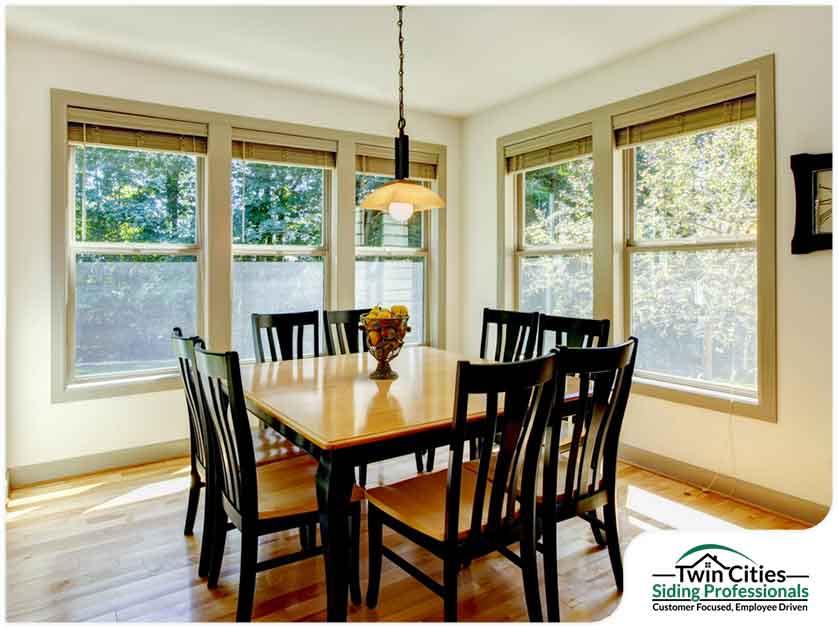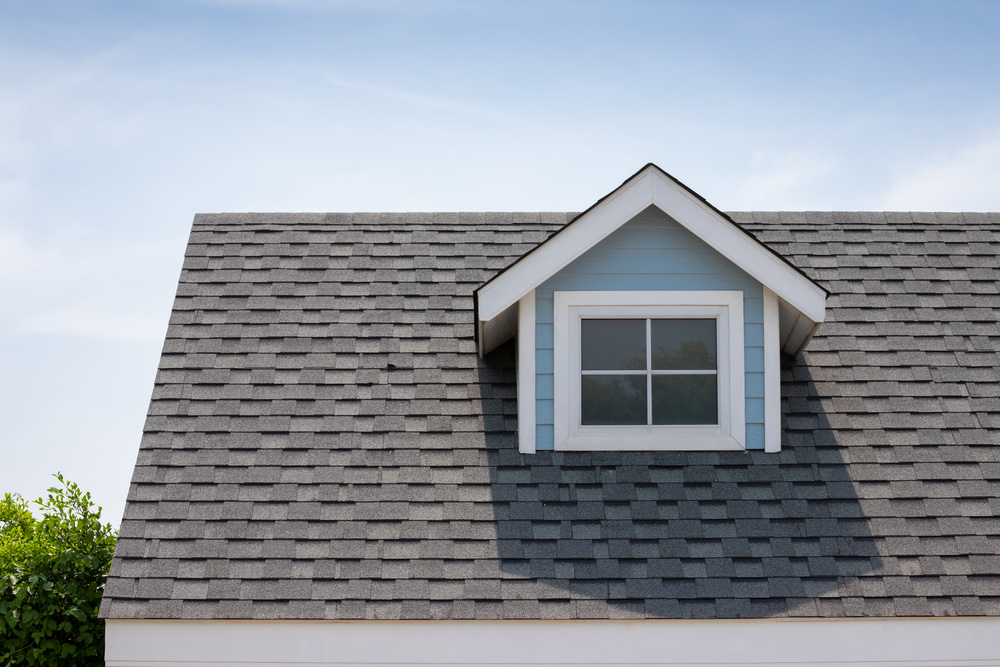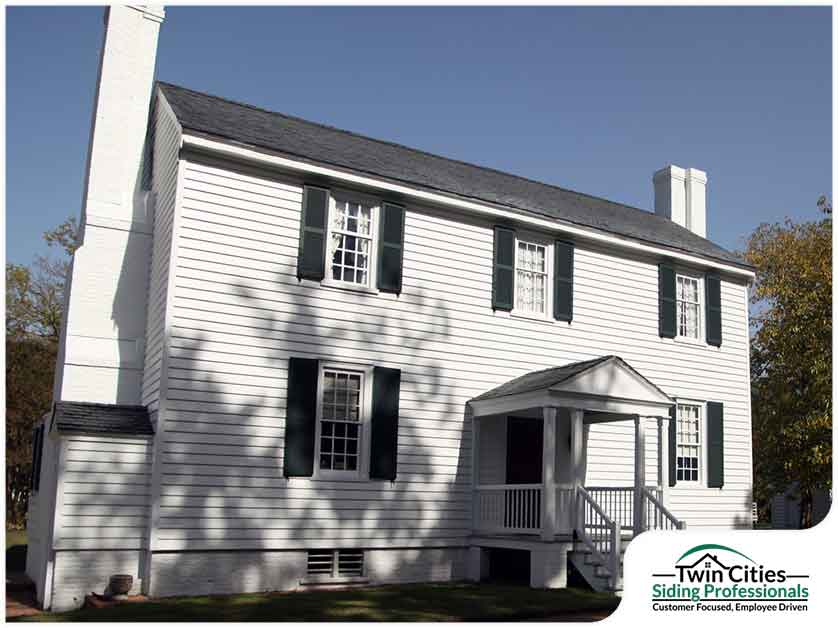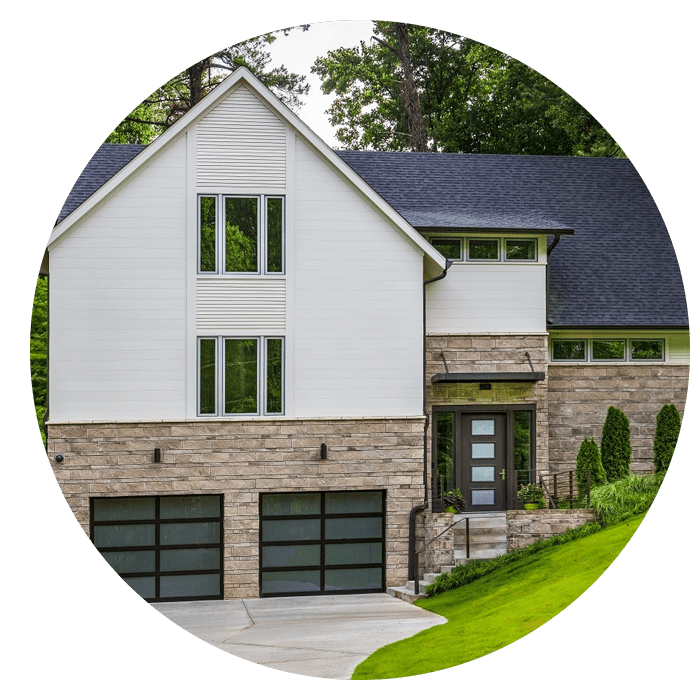Window performance is a critical part of protecting your home from Minnesota’s extreme weather. With temperatures that swing from sub-zero winters to humid summers, Twin Cities homeowners need window solutions built for long-term comfort, efficiency, and durability. If you’re replacing old windows or planning a new installation, understanding your options is the first step to making a smart investment.
Here’s what to know before choosing the best windows for your Twin Cities home.
Key Takeaways
- Low-e glass and argon-filled panes help Twin Cities homes stay warm in winter and cooler in the summer.
- Window frame materials like fiberglass, vinyl, or wood affect energy savings, comfort, and maintenance needs year-round.
- Existing window openings, glass type, and frame material all influence replacement costs and long-term performance.
- A trusted installer makes sure each window fits right, works well, and protects your home through every season.
What Makes a Window Ideal for Twin Cities Weather?
Below are the most important window features to consider if you want year-round comfort, efficiency, and durability in Minnesota’s extreme conditions.
Low-E Glass for Seasonal Efficiency
In the Twin Cities, low-e glass windows are among the best windows you can install for year-round energy savings. With their ability to reduce heat transfer, these windows block unwanted solar rays in summer and help retain interior warmth during winter.
If you’re wondering what to look for when buying new windows, this feature should be near the top of your list. Combined with gas-filled chambers and panes of glass with low emissivity, low-e windows offer maximum comfort and consistent temperatures throughout your home.
Argon Gas Fills for Thermal Control
Minnesota’s extreme weather demands more than just standard solutions. Argon gas—a dense, invisible filler between window panes—slows down heat movement better than air.
Common in both double-pane windows and triple-glazed windows, argon improves energy efficiency by reducing heat gain in summer and heat loss in winter. It’s an ideal choice when replacing windows in areas prone to wind, snow, and humidity.
Durable Window Frame Materials
Choosing the right window frame materials is just as important as the glass.
Vinyl windows are popular for their low maintenance, but they must be high quality to endure the heat and cold typical in Minneapolis–St. Paul. Fiberglass windows are a stronger alternative, offering better thermal expansion control and durability.
While wood windows offer traditional charm, they require more upkeep.
Avoid uninsulated aluminum windows unless they have a thermal break, as they transfer heat easily and can increase condensation.
Triple Pane Construction for Harsh Winters
A triple pane design includes three layers of window glass separated by argon gas or another insulator, making them ideal for heat loss control in the Twin Cities.
These windows deliver better insulation than two panes, especially when you need protection from sub-zero temperatures. They also reduce sound transmission—a benefit for homes near highways or busy intersections.
ENERGY STAR Certification Tailored to Climate Zone
The ENERGY STAR program defines performance metrics that reflect actual climate needs.
For the Twin Cities’ northern zone, a low U factor and an appropriate Solar Heat Gain Coefficient (SHGC) are essential.
Windows that meet these standards display the ENERGY STAR label and are independently verified by the National Fenestration Rating Council. These Energy Star-certified windows help lower utility bills and support year-round energy efficiency.
How to Choose the Right Window for Your Twin Cities Home
Choosing the right windows starts with understanding your home’s structure, needs, and goals. Here’s how you can make confident, climate-smart decisions:
Evaluate Your Existing Window Openings
Before installing windows, assess each existing window opening.
Many homes in Minneapolis have non-standard frames, especially in older neighborhoods like Nokomis or Como. If your existing frame or existing window frame is deteriorated, full-frame new construction windows might be required.
In these cases, the contractor rebuilds the framed opening to support the new unit.
Determine Your Priorities
Whether you’re choosing new windows for better insulation or to enhance your home’s curb appeal, your decision will affect comfort and long-term value.
Consider whether you want the look of wood, the performance of fiberglass, or the ease of vinyl. Pay attention to glass type, frame material, number of panes, and gas fill—all of which impact indoor temperature and appearance.
Even interior parts such as top sash and lower sashes in double hung units influence how well the window functions throughout the seasons.
Compare U-Factor and SHGC Ratings
For maximum energy efficiency, check the U factor and Solar Heat Gain Coefficient before buying. The lower the U factor, the better the insulation. A well-balanced SHGC minimizes heat gain without eliminating passive solar benefits in winter.
These measurements ensure you choose the right windows for the Twin Cities’ unique climate.
Understand the True Cost of Replacement
When planning to upgrade with replacement windows, don’t focus solely on replacement costs. You must also factor in installation costs, especially for professional installation of construction windows or larger units like picture windows or awning windows.
Other considerations include disposal of the existing window, trim restoration, and product upgrades for unusual shapes or specialty frames.
Always read the fine print to fully understand the scope of your investment.
Choose an Option That Matches Your Home’s Construction
If you’re building or remodeling, new construction units may offer better design flexibility. However, if you’re replacing windows without major changes, retrofit options may suit your budget.
For homes throughout the Twin Cities—whether featuring single hung, double hung, or casement windows—it’s essential to match window styles and window materials to both the structure and climate.
Long-Term Value Starts with the Right Window Partner
At Twin Cities Siding and Roofing, we make buying windows a rewarding experience.
We guide you through every step of the process—from identifying the right window frames and glass combinations to ensuring proper installation of hung windows, doors, and other exterior upgrades.
Whether it’s replacing single hung windows or exploring double hung models with easy cleaning features near the Twin Cities campus, we ensure every unit is installed with care and precision.
Ready to upgrade your windows?
Contact us today to schedule your free estimate.
Frequently Asked Questions
What should I look for when buying new windows to reduce cooling costs in summer?
Choose replacement windows with Low-E coatings, argon gas, and fiberglass frames. These options improve energy efficiency and noticeably reduce cooling costs during hot, humid Twin Cities summers.
Are double-hung windows or picture windows better for comfort and energy efficiency?
Picture windows insulate well but don’t open. Double hung windows improve airflow. We’ll help you choose based on layout, energy efficiency, and home performance goals.
Do fiberglass windows outperform other materials in Minnesota’s harsh weather?
Fiberglass windows outperform other materials because they resist breakage, handle temperature swings, and last longer with minimal maintenance. They’re a dependable solution for Minnesota’s demanding climate.
Can replacement windows open outward, and is that useful in extreme weather?
Yes, casement windows open outward and create a strong seal against wind and moisture. We recommend them in rooms exposed to harsh weather or where insulation matters most.





